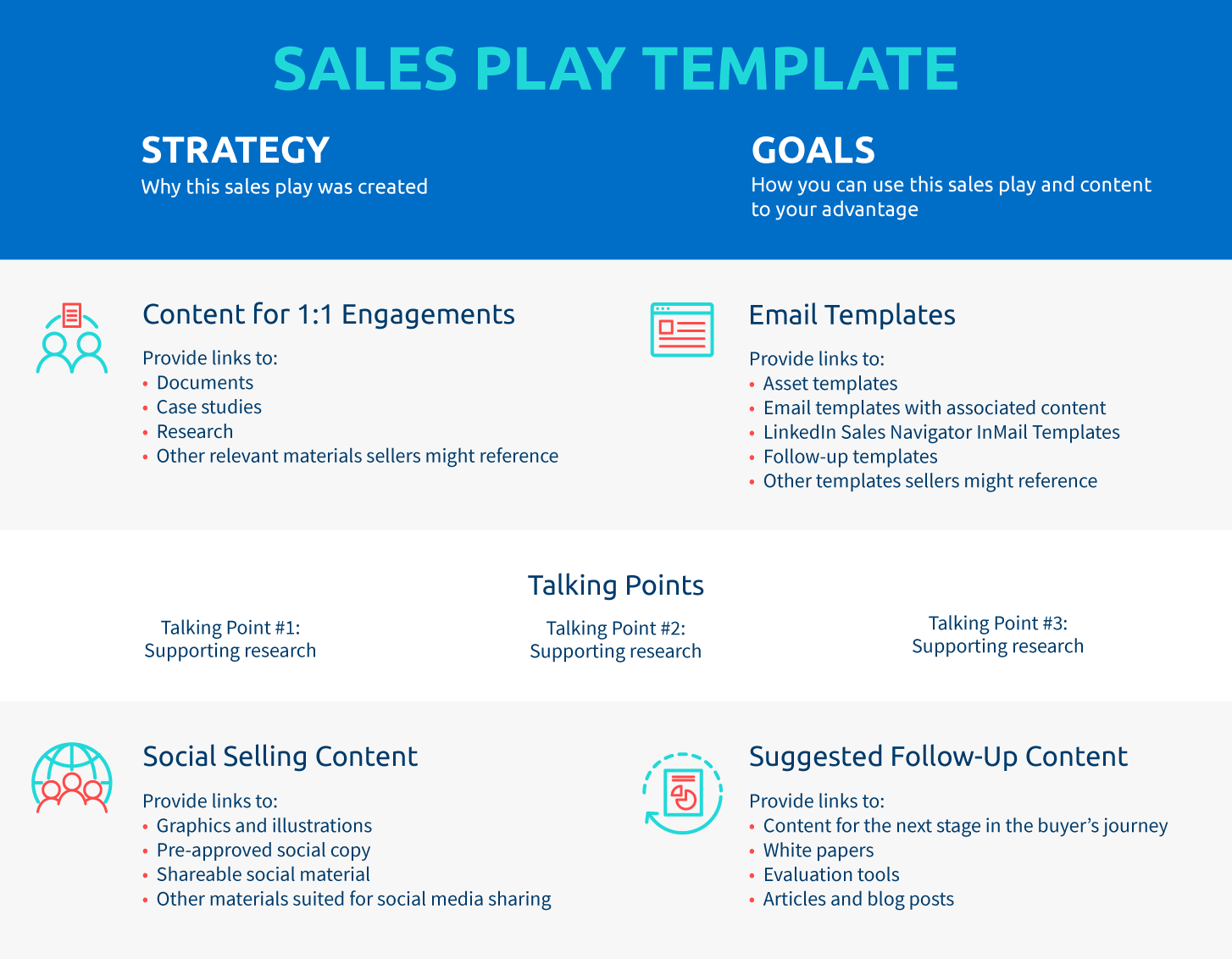As a Highspot Account Development Representative, I know it is no longer the case that sellers get to control the buying process – rather, it’s the reverse. In many ways, the role of the salesperson has shifted from being the pitcher in baseball, where they get to dictate when and how to deliver the pitch, to the batter, where they now must be ready for anything that the prospect decides to throw at them. In fact, it’s estimated that 50 to 80% of the buyer’s decision-making process happens before the sales rep gets involved.
For salespeople to combat this paradigm shift in buying patterns and behaviour, we must be ready for any conversation, question or objection, no matter where our prospects are in the buyer’s journey — and we have to be able to turn on a sixpence. That’s why Highspot is designed to empower sales reps like me with modern sales plays and sales playbooks.
WHAT IS A SALES PLAYBOOK?
Sales playbooks are necessities for every modern seller. These critical resources outline what a sales rep needs for any given buyer conversation, containing everything from strategies and messaging points to social images and email templates.
A traditional, one-size-fits-all playbook is simply no longer enough to work with educated buyers and dynamic sales processes. In my day-to-day, I need different plays for specific personas, verticals and stages to keep me focused and on-message across different selling scenarios.
So, what do you include in a powerful, modern playbook to take your sales game to the premier league? Here’s an example of a sales playbook template created in Highspot that illustrates what I’m talking about. I’ll break down the different parts below!

Here are seven essential elements that belong in every winning sales playbook:
1.) Strategy: The strategy in a sales playbook sets the tone and positioning. The best plays that I use on a daily basis have a clear strategy with themes that recur throughout the rest of the play. Plays with clear strategies are also more inviting to use.
2.) Goals: Once you have an understanding of the purpose of the play, the goals provide insights on when and how you can use the content and information. Having sales and marketing collateral is super beneficial as an ADR, but it can quickly turn into a burden if it is not organised and recommended in a way that makes sense to the rep. The goals in a sales play do a great job of creating the framework for not only what to say, but how to say it and when to use templates and different materials.
3.) Talking Points: I enjoy using specific talking points because they work in a number of different use cases that are staples in my daily workflow. For example, if I am looking to tailor an email to a specific persona, I can pull a talking point that would be most relevant to the prospect. When I am making cold calls, I always keep talking points on my desktop, because they add value quickly when leaving voicemails and help to guide me to have conversations that are meaningful and will quickly resonate with my prospect.
4.) Templates: Using templates effectively requires a touch of art and science. The art refers to the messaging within the template, which undoubtedly needs to be good content. But when you pair powerful messaging with the ability to recommend materials to ensure that sellers are using the template in the correct scenario, it turns into a powerful sales play. While I enjoy using templates, I will always go to a sales play 1) to ensure that I’m using the best template for my specific scenario, and 2) to make sure that the template I’m using is the most up-to-date.
5.) Content for 1:1 Engagements: To ensure that I make the most out of every opportunity, I strive to use the most effective content. Often, I find myself wanting to send more than 10 pieces of content, and past experience has shown that this isn’t the best way forwards. Rather than feel stressed about sending an information overload, I use sales plays as away to narrow my search to a few items that ultimately fit what the prospect wants.
6.) Content for Social Posts: There are so many different approaches to formulating a social post. There first thing I need to determine is the audience I am addressing. What persona should I target? What industry? Should it be product-related? Should I help to promote an upcoming webinar, or talk about an integration announcement? There is plenty of content and messaging that I would like to send out on social media, but I don’t always know if the materials are relevant. When a sales play has content specifically recommended for social, I can post easily, quickly and with confidence.
7.) Suggested Follow-Up Content: For situations when I end a phone call and know my next steps, including which content or additional information to send, I can search in Highspot and include it in my follow-up. If I find myself in a situation where I am not quite sure what to send, finding the sales play most relevant to my current scenario and checking for the best collateral is a daily routine for me. These are very crucial scenarios where often I am asking for a next step and it is imperative that I include the most relevant content to help to educate my buyer.
I’m not alone in saying that I prefer not to be force-fed training, coaching, product information and even new marketing and sales collateral. An effective sales play feels like a guided selling experience where account-development representatives can consume material when it is most relevant to do so, ultimately creating enjoyable workflows and increased productivity. At the end of the day, ease of use and functionality are vital in driving adoption of the sales plays you create. If they aren’t easy and don’t add value, my teammates and I would find another way to connect with our prospective buyers. Fortunately, we don’t have to.
Learn more about what today’s sales playbooks should do for your sales organisation with our whitepaper, How to Land the Modern Sales Playbook.



